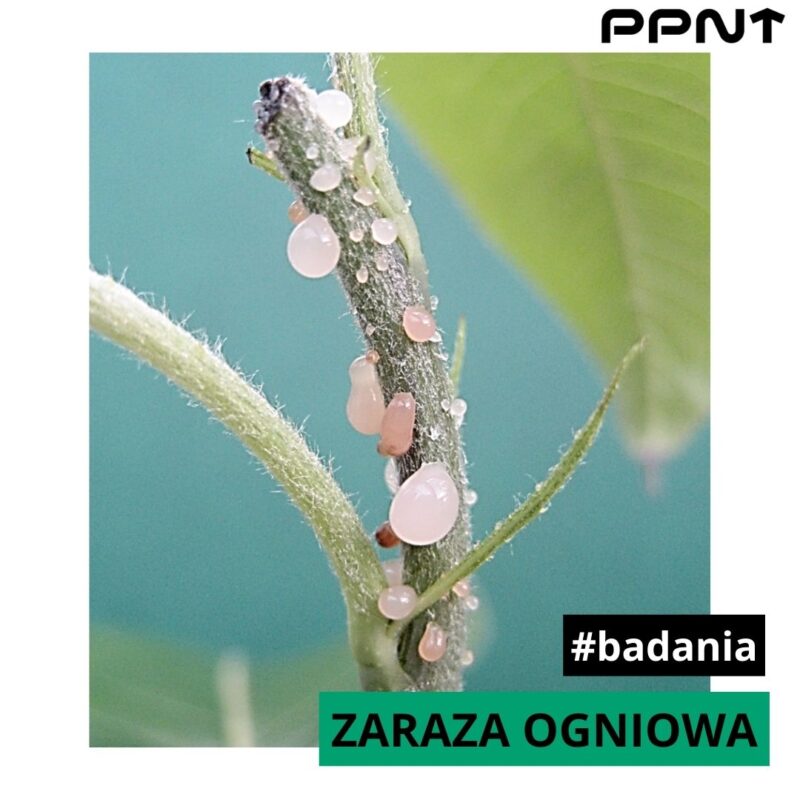FIRE BLIGHT AND THE GREEN DEAL – HOW WILL IT AFFECT ORCHARDS?
2024-03-05 FIRE BLIGHT AND THE GREEN DEAL – HOW WILL THE EUROPEAN STRATEGY AFFECT ORCHARDS?
FIRE BLIGHT AND THE GREEN DEAL – HOW WILL THE EUROPEAN STRATEGY AFFECT ORCHARDS?
FIRE BLIGHT IS A BACTERIAL DISEASE THAT AFFECTS ONE OF THE WORLD’S MOST IMPORTANT FRUIT SECTORS – APPLE PRODUCTION. THE EUROPEAN GREEN DEAL STRATEGY WILL AFFECT THE WAY IN WHICH NOT ONLY FIRE BLIGHT BUT ALSO OTHER BACTERIAL AND FUNGAL DISEASES ARE CONTROLLED.
The measures planned under the Green Deal include the implementation of a ‘field-to-table’ strategy, which aims, among other things, to phase out copper-based preparations. Such compounds are an essential tool for controlling certain fungal and bacterial diseases in crops. This creates a large gap in the programme to protect apple trees against fire blight.
Fire blight is the most dangerous and difficult disease to control in apple crops. This disease is becoming increasingly important in our country and is caused by the bacterium Erwinia amylovora. This is mainly due to the warming climate and the occurrence of high temperatures and violent weather events in spring and summer.
Fire blight infects all above-ground parts of host plants. However, it is most dangerous during flowering, when mass infestations of flowers can occur. This is therefore the most important period for protection during the growing season. Later in the season, secondary infections and infestation of actively growing shoots can occur.
At the 63rd National Scientific Conference on Fruit Plant Protection, a team of scientists from PPNT, IO-PIB and Intermag addressed the topic of new specifics to fill the gap left by copper-containing preparations.
Research
The best strains of the pathogenic bacterium E. amylovora were selected using pear fruit sets. The interaction of environmental bacteria with the pathogen took place on the surface of the pear slices.
The efficacy of the selected strains was then evaluated on apple flowers and shoots under greenhouse conditions. Fully developed flowers were sprayed with the tested strains and then infected with the bacteria after 24 hours. The efficacy of the prototype biopreparations supplied for testing by INTERMAG Sp. z o.o. ranged from 44 to 68%. As a result of the project, products based on the selected strains are currently being implemented and should be available on the market in the near future.
Another issue in the fight against fire blight at the Institute of Horticulture – PIB in Skierniewice was to exploit the phenomenon of resistance induction. The chemical compounds searched for would be environmentally friendly. The work was carried out as part of the SONATA 18* project in cooperation with the Poznan Science and Technology Park. Various salicylic acid derivatives in the form of sodium, potassium or choline salts and benzoic acid were selected for testing. The experiments were carried out on apple trees in the greenhouse, which were sprayed twice and then the actively growing tips of their shoots were infected by cutting with sterile scissors dipped in an E. amylovora suspension. The degree of infection was expressed as a percentage of the decorticated parts of the shoots. The efficacy of the new inducers varied between 80 and about 20%, depending on the time of observation.
